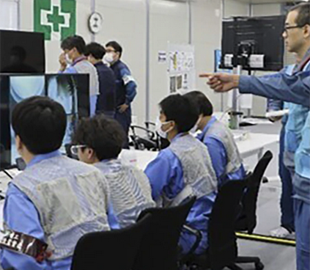
On Tuesday, a telescopic robot began a two-week mission to retrieve the first sample of molten fuel remnants from inside one of the three damaged reactors at the Fukushima 1 nuclear power plant, AP News writes.
Highly radioactive fuel and other materials in the reactors melted when a powerful earthquake and tsunami in 2011 damaged the plant's cooling systems.
The plant's operator, Tokyo Electric Power Company Holdings, has previously used small robots to inspect reactor interiors, but for the first time it will collect a sample of molten debris, marking the start of the most difficult part of the decades-long decommissioning of the plant.
The mission was originally scheduled to begin on August 22, but was halted when workers noticed that the five 1.5-meter pipes that were to be used to propel the robot into the reactor were in the wrong order, TEPCO officials said.
200% Deposit Bonus up to €3,000 180% First Deposit Bonus up to $20,000The equipment was assembled in the correct order for Tuesday's attempt, the company said.
Once inside the reactor vessel, the robot is controlled remotely from a safer location.
The robot, nicknamed “Telesco,'' can extend up to 22 meters, including pipes pushing it from behind to reach the piles of molten fuel, where he will use tongs to collect a fragment smaller than 3 grams (0.1 oz). It is expected to take about two weeks to retrieve the fragment.
An estimated 880 tons of deadly radioactive molten fuel remain in the three reactors.
Chief government spokesman Yoshimasa Hayashi said the mission marks the beginning of the most difficult stage of work on liquidation of the consequences of the accident at the Fukushima-1 NPP. "The government will firmly and responsibly deal with decommissioning until the very end", — he said.
The government and TEPCO have set a 30-40 year timeline for the cleanup, despite criticism that it is unrealistic. Specific plans for the complete removal of the remains of the melted fuel or its storage have not yet been determined.

